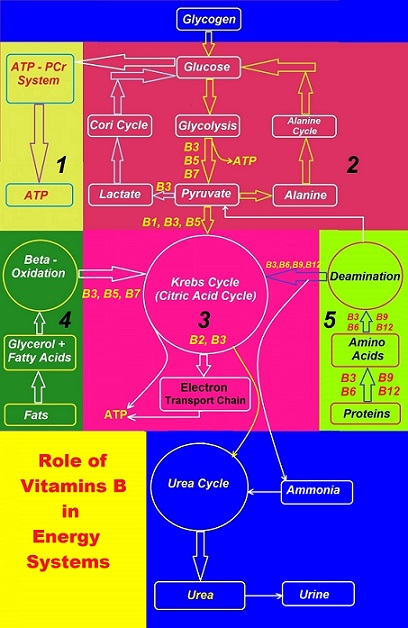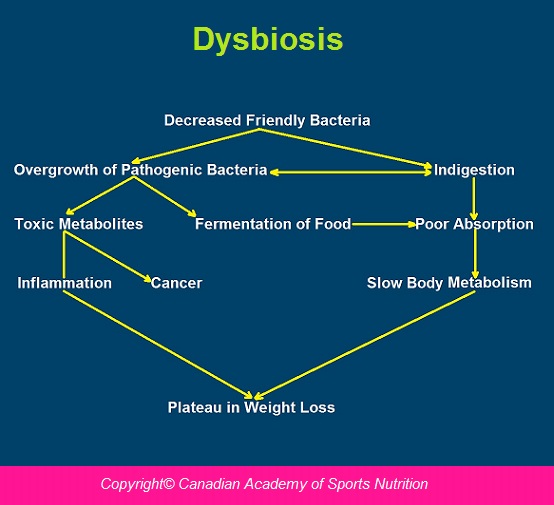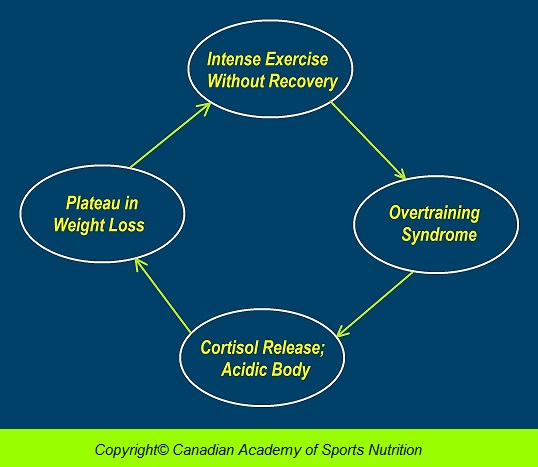Causes of Plateau in Weight Loss:
You should not look for a single reason if you hit plateau. In fact, more than just one reason leads to plateau, making it difficult sometimes to overcome. In other words, plateau is a multifactorial incident. Though the exact cause of plateau is unknown, the experts have been hypothesized few reasons.
According to the Canadian Academy of Sports Nutrition, at least two or more of the following causes are always involved in plateau:
- Failure to comply.
- Body adaptation.
- Body acidification.
- Insulin resistance.
- Leptin (appetite hormone) insensitivity.
- Imbalance among leptin, ghrelin (hunger hormone), adiponectin, and orexin.
- Micronutrients deficiencies.
- Dysbiosis.
- Disordered metabolism of serotonin.
- Overtraining syndrome.
- No – carbohydrate diet.
- Lack of exercise or failure to build muscle.
- Undiagnosed medical conditions.

1) Failure to Comply:
Inability to commit to the weight loss program is by far the most common cause of plateau. Temporary failure to stick to the plan is usually normal. Being off the track is very common and you should not feel guilty about that. This is why most nutritionists give a “cheat day” to their clients to overcome to the temptation of noncompliance. However, it should be a “red flag” to the client and weight management coach if noncompliance is more frequent and prominent.
Failure to comply with the program, which we call it “commitmentitis”, could result from different factors, such as lack of motivation, poor connection between the client and the weight loss coach, lack of support from family and friends, very restrict diet, and failure to control hunger pangs.

2) Body Adaptation:
Body adaptation is a process by which the body gets accustomed to the same foods or same exercise routines. It is a mechanism by which the body biologically tries to avoid changes and to survive.
When you are on a diet and keep eating the same foods, your body metabolism gets used to them and finally slows down. Moreover, to have the same foods everyday fails to provide different nutrients to the body needed to keep the body metabolism active and going. For this reason, variety is a key to rev up your body metabolism. If you have the same foods, your body metabolism would stay at the same pace. When you eat a variety of foods, your body has to do few things differently, which leads to active body metabolism.

3) Body Acidification:
The body acidity is measured by pH which is the activity of hydrogen ion. pH level is from 1 to 14, and 7 is considered as neutral. A pH less than 7 is called acidic, and a pH greater than 7 is called basic or alkaline. The normal pH of the blood and urine in human beings are 7.35 – 7.45 and 6 respectively.
Human body produces many toxins and metabolic by-products that lower the pH level of the blood, making the body acidic. Your body could be acidic because of your eating pattern as well, as there are foods that reduce pH level.
When your body is acidic, you get tired easily. It shuts down body metabolism, turns off the fat burning processes, and switches the body from fat burning mode to fat saving mode. Moreover, acidity prevents insulin from functioning normally. Insulin is the hormone responsible for carrying carbohydrates into the cells. In an acidic environment, insulin fails to act properly, leading to insulin resistance

4) Insulin Resistance:
Insulin is a hormone released by the pancreas and has a key role in metabolism of carbohydrates, proteins, and fats. Insulin sits on its receptors on the cells, leading to activation of cascades of reactions that transfer carbohydrates (in the form of glucose) and amino acids into the cells. In fact, all tissues and cells in the body require insulin for effective uptake of glucose, except nervous system, kidneys and red blood cells.
Insulin resistance is a condition in which the cells do not respond to normal actions of insulin, leading to interfering with metabolism of carbohydrates, proteins, and fats!
Insulin resistance may show itself as one of the following conditions:
- High blood sugar.
- Fatigue and tiredness.
- High blood pressure and triglyceride.
- Weight gain.
- Plateau during weight loss program.
- Increased hunger and thirst.
- Increased tendency to infections.
- Susceptibility to inflammation.
- Diabetes type II.

Risk factors for developing insulin resistance are:
- Acidic diet
- Diets poor in fiber
- Diabetes type II
- High blood pressure
- High triglyceride level
- Low level of good cholesterol
- Sedentary life style
- Pregnancy induced diabetes
- Liver diseases, especially “Hepatitis C”
- Hemochromatosis (Iron overload)
- Acanthosis nigricans (a skin disorder)
- Donohue syndrome (a rare genetic disorder)
- Rabson–Mendenhall syndrome (a rare medical condition that affects insulin receptors).
- Increased cortisol level (Cushing disease or syndrome)
- Polycystic ovarian syndrome (PCOS)
- Food supplements: Glucosamine, CLA (conjugated linoleic acid), and Omega-3.
- Medications (corticosteroids, rifampicin, isoniazid, olanzapine, risperidone, progestogens, glucocorticoids, methadone, anti-HIV drugs, niacin, and birth control pills).
- Vitamin D deficiency
- Zinc deficiency
5) Leptin Insensitivity:
Leptin is a hormone produced mainly by the fat cells and a very small amount by the ovaries, skeletal muscles, liver, stomach and pituitary gland. It is famous as appetite controlling hormone, because it suppresses appetite by acting on the hypothalamus – a part of the brain that controls appetite and satiety. This hormone has a key role in metabolism.
Leptin has been linked with obesity, fat mass, and food intake. If circulatory leptin level is low, or the brain does not respond to normal function of leptin, it is called leptin insensitivity or resistance. In people with leptin insensitivity, appetite would be unusually greater than normal and they experience excessive hunger pangs, making weight loss process difficult and leading to plateau at some point!
Risk factors for developing Leptin insensitivity are:
- Acidic body
- Caloric restriction
- Foods high in GI (glycemic index)
- Diets poor in fiber
- High percentage of body fat
- Emotional stress
- Sleep deprivation
- Increased testosterone level
- Decreased estrogen level
- Diabetes
- Fatty liver
- Polycystic ovarian syndrome (PCOS)
- Low function thyroid
- Abnormal serotonin level


6) Imbalance among Leptin, Ghrelin, Adiponectin and Orexin:
Ghrelin is a hormone released primarily by the stomach and a very small amount by the small intestine and pancreas. It is famous as “hunger hormone”, as it stimulates hunger feeling and increases appetite. Imbalance between leptin and ghrelin could affect the weight loss process. Incredible as it may seem, this imbalance is one of the theories behind “anorexia nervosa” as well. In fact, it is believed that overproduction of leptin and underproduction of ghrelin would lead to anorectic status.
During weight loss period, underproduction of leptin and overproduction ghrelin would collectively stimulate hunger pangs, forcing the person to eat more and cheat on diet!
Ghrelin has a paradox effect on the body. On one hand, it stimulates the release of growth hormone which speeds up consumption of fat. On the other hand, ghrelin suppresses fat utilization which is opposite to the effect of growth hormone.
Overall, any increase in ghrelin level would increase hunger, challenging the weight loss process.
The following factors can increase ghrelin level:
- Poor fiber diet
- Low protein diet
- Foods high in fat
- Decreased blood sugar level
- Stress
- Lack of sleep
Adopinectin is a hormone released exclusively by the fat cells. It is sometimes referred to as AdipoQ or Acrp30. This newly discovered hormone has an important role in metabolism of fat and glucose. It seems that adiponectin functions through insulin, which explains its importance in fighting insulin resistance. Adiponectin along with the three key minerals, zinc, chromium picolinate and vanadium sulfate, may improve insulin function.
There is an inverse relationship between blood levels of adiponectin and percentage of body fat. This hormone fails to function appropriately in an acidic environment.
Orexin, also called hypocretin, is a hormone released by the brain and regulates appetite and wakefulness. Leptin and glucose inhibit the production of orexin, reducing appetite. Ghrelin, lack of sleep, and low blood sugar level stimulate the production of orexin, increasing the craving for foods.
The correlation among leptin, ghrelin, adiponectin and orexin and their links with obesity and weight loss are of hot topics among research scientists.
7) Micronutrients Deficiencies:
Micronutrients include vitamins, minerals, antioxidants, phytonutrients, and fatty acids. They are involved in many reactions and metabolism of macronutrients (carbohydrates, fats, and proteins). In fact, macronutrients require micronutrients to get metabolized and continue burning. Micronutrients – deficient diets are a common reason to plateau in a weight loss program.
In order to understand the importance of micronutrients in a weight loss program, we have provided you vitamin B group as an example. You could see the role and importance of vitamin B group in the energy systems on the energy map (see below). Your energy systems are the “metabolic mills” of your body by which you could metabolize macronutrients.
8) Dysbiosis:
Dysbiosis is disruption of normal flora of the intestines. It is the imbalance between good and bad bacteria of the intestine. Dysbiosis has been linked with obesity, chronic fatigue syndrome, inflammatory bowel disease, weak immune system, and cancers.
The common causes of dysbiosis are long term consumption of antibiotics, alcoholism, and unhealthy diets (high in fats and animal proteins and low in fiber).
9) Disordered Metabolism of Serotonin:
Serotonin is a hormone predominantly found in the gastrointestinal and nervous systems. Being considered as “happiness hormone”, serotonin plays an important role in the regulation of appetite, mood, sleep, and cognitive functions (memory and learning). Low levels of serotonin have been linked with depression, anxiety, obesity, migraine, chronic fatigue, poor concentration, and sleep disorders.
An increase in serotonin level improves mood and sleep, enhances cognition, and helps control appetite. Serotonin level increases in the brain in the following conditions:
- Foods with higher ratio of tryptophan to phenylalanine and leucine (banana, dates, and papaya)
- Exposure to bright light (sun)
- Exercise
10) Overtraining Syndrome:
Being also referred to as overworked, overstressed, and burnout, overtraining syndrome is mainly seen among Gym-goers. It is a constellation of physical and emotional symptoms resulted from exercising intensely beyond recovery capacity. Overtraining leads to long term decrements in performance and it may take several weeks or months to restore athletic performance.
When developed overtraining syndrome, the body faces with high levels of stress and releases stress hormone (cortisol) to cope with. Stress hormone is an anti-insulin hormone and contradicts insulin function, interfering with metabolism of fat and glucose. In a person with overtraining syndrome, laboratory results show an increase in the levels of cortisol (stress hormone) and uric acid in blood and ketones in urine.
(See “Overtraining Syndrome” under the section of “Athletic Disorders”).

11) No – Carbohydrate Diet:
A common mistake among weight loss seekers is that they believe if they cut down all carbohydrates, they would lose weight easily. Obviously, carbohydrates should be adjusted in the diet, and not be eliminated completely.
When you go on a no – carb diet, you would notice three changes: a) you would become agitated and nervous, because the brain cannot function properly due to deprivation of its energy source – carbohydrates, b) you initially lose some weight, which is mainly due to burning your stored carbohydrates (glycogen) followed by water loss. Then your body shifts to burn fats, producing ketones which make the body acidic. And your body metabolism shuts off in an acidic environment, and c) you hit plateau even though you are not having any carbohydrates at all.
It is highly important to keep in mind that fats require intermediates to continue being metabolized. The intermediates come from the metabolism of carbohydrates. This is why, there is a famous saying in sports medicine that “fats burn in a carbohydrate flame” (see the “Energy Map in the Body” under the section of “Sports Nutrition”).
12) Lack of Exercise or Failure to Build Muscle:
For non – Gym goers who hit plateau, exercise is an important element to be added to the program. The benefits of exercise are many! Exercise helps lose weight through the following mechanisms:
- Exercise stimulates the release of growth hormone (GH), which is a powerful fat burner (see “Growth Hormone Enhancers” under the section of “Supplementation”).
- Exercise stimulates the release of irisin, the exercise hormone. It is a newly discovered hormone that supports normal function of insulin.
- The muscles constitute nearly 50% of the body mass, but they consume 18% of BMR (basal metabolic rate). For one pound gain in muscle mass, BMR would increase by 8 – 10 kCal per day. Therefore, the more muscles you build, the more fats you burn!
- Exercise stimulates the aerobic metabolism that improves catabolism of fats (see “Aerobic Energy System” under the section of “Sports Nutrition”).
- Exercise improves microcirculation of the adipose tissues, which enhances their breakdown.
- Exercise enhances functions of the liver, an organ that plays a key role in body metabolism.


13) Undiagnosed Medical Conditions:
An intractable plateau requires a medical attention and a complete medical checkup. The following medical conditions may demonstrate themselves through obesity or being overweight that is not responding to weight managing approaches:
- Cushing`s syndrome.
- Hypothyroidism (low function thyroid) (see “Hypothyroidism” under the section of “Medicinal Nutrition”).
- Insulinoma: it is a tumor of the pancreas in which people often gain weight as a result of overeating to avoid symptoms of hypoglycemia.
- Polycystic ovarian syndrome (PCOS) (see “Polycystic Ovarian Syndrome” under the section of “Medicinal Nutrition”).
- Hypothalamic diseases (tumors, trauma, or inflammation).
- Depression (see “Depression” under the section of “Medicinal Nutrition”).
- Diabetes (see “Diabetes” under the section of “Medicinal Nutrition”).



